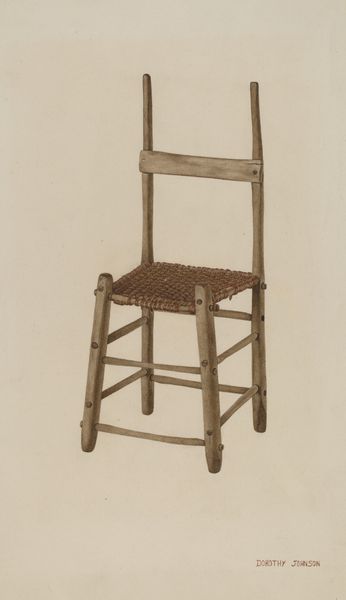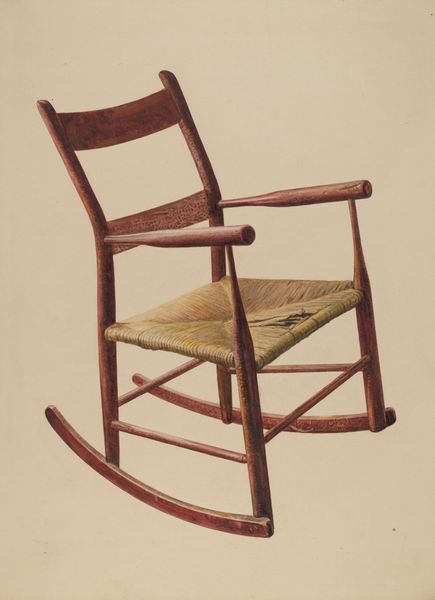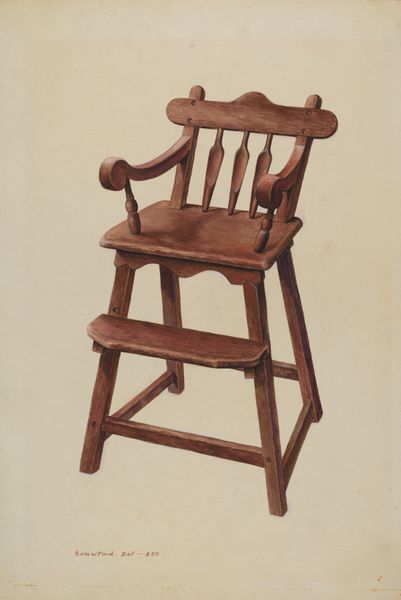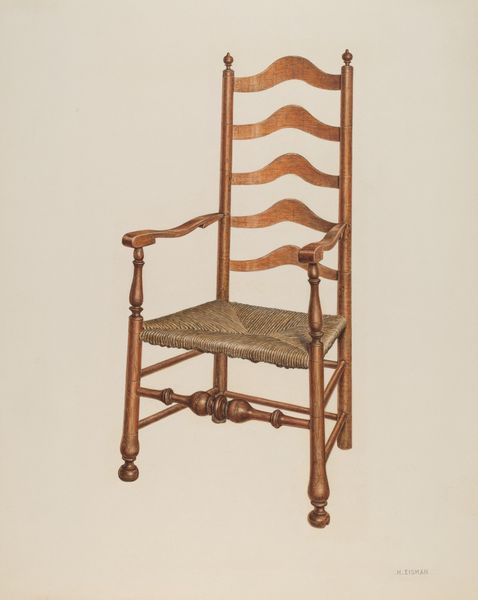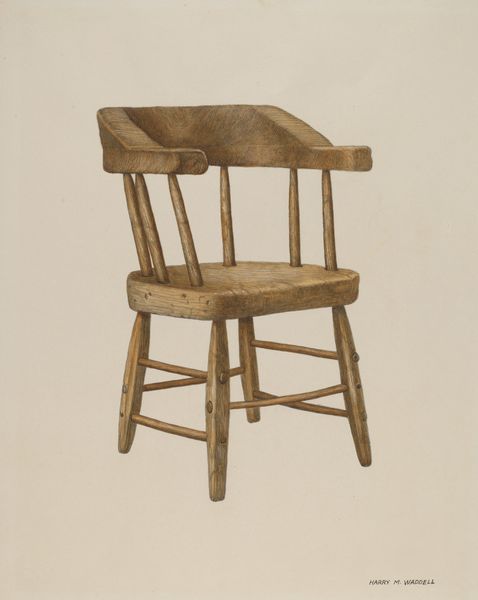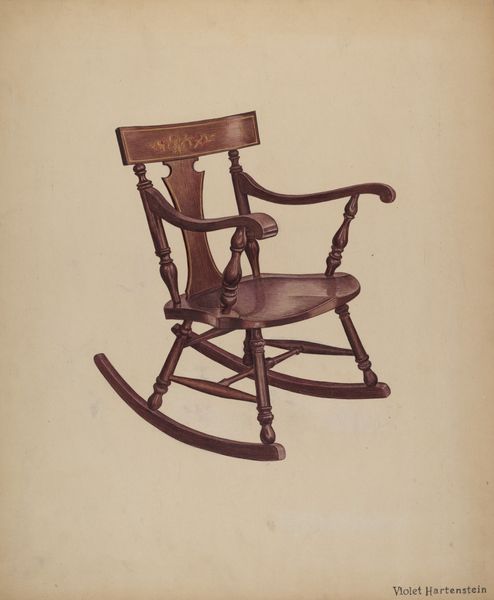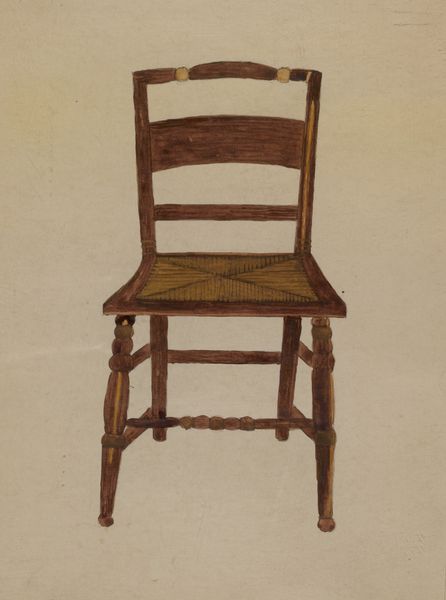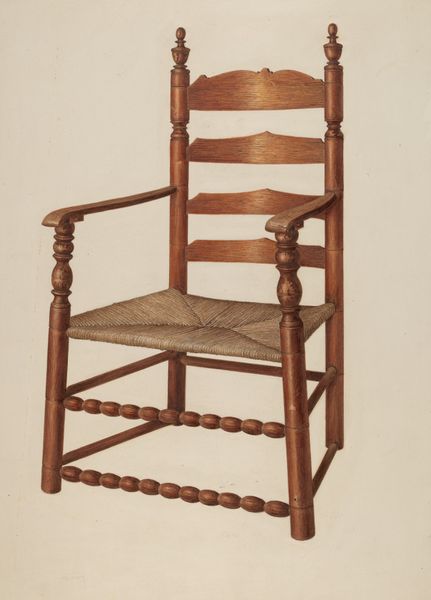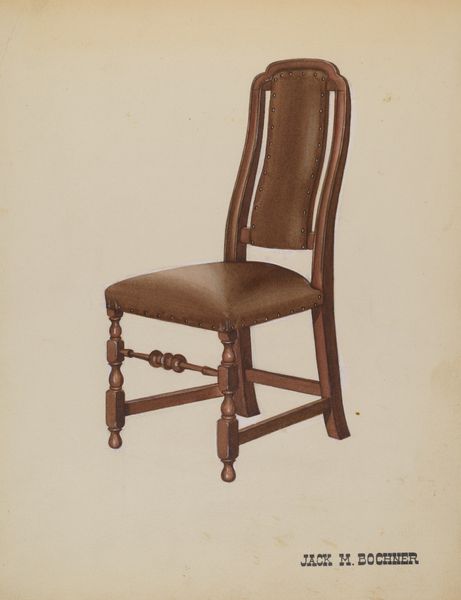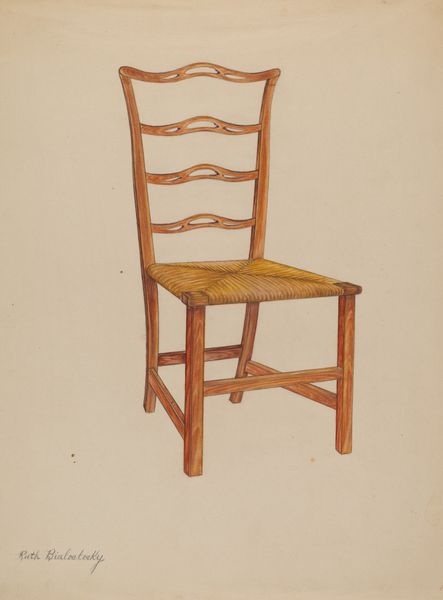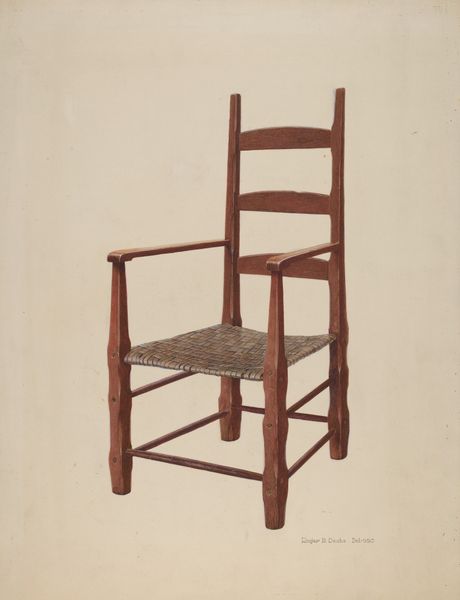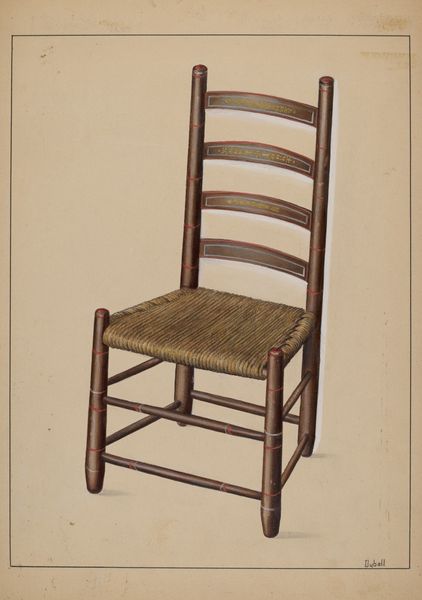
drawing, painting, watercolor
#
drawing
#
painting
#
watercolor
#
academic-art
#
watercolor
#
realism
Copyright: National Gallery of Art: CC0 1.0
Curator: Well, here we have "Shaker Rocking Chair," a watercolor by Orville Cline, created around 1939. It’s a striking piece. The focus is solely on this object, set against a neutral backdrop. Editor: Immediately, I’m struck by the almost surgical precision. It feels…almost too clinical, given the inherent warmth and comfort we usually associate with a rocking chair. Curator: That clinical detachment might reflect the goals of the Index of American Design, a New Deal project under the WPA, that aimed to document American material culture, specifically handicrafts, during the interwar years. The goal wasn't artistic interpretation but faithful recording. Editor: That's fascinating! Knowing that this came out of the WPA really shifts the meaning. It wasn't about romanticizing the chair but capturing a specific artifact for posterity, in the face of economic uncertainty and modernization. The almost unsettling clarity, the stark lighting - perhaps these emphasize how easily traditions can be lost if they aren’t meticulously preserved and valued. Curator: Exactly. It's not about the artist's feelings towards the object, but about archiving and classification. Think about the socio-political context – mass production threatened these artisanal crafts, which becomes especially poignant considering Shaker designs champion quality and longevity. Editor: And Cline perfectly renders the intricate joinery, the woven seat...the shadows are all carefully studied. It makes me consider: in rendering the "Shaker Rocking Chair" through an "academic art" lens, do we honor or further separate from its purpose? What does "realism" even mean when considering an object of comfort turned into state documentation? Curator: Good questions. It serves as a document of not only design, but also of a specific time in American history when the role of government in cultural preservation was being actively defined. Editor: Seeing the painting, then understanding its story of how and why it was made - my initial reaction shifted quite significantly. There’s real activist power in remembering how we collectively chose what and how to preserve. Curator: Indeed, this work functions both as an image and a reminder of institutional narratives.
Comments
No comments
Be the first to comment and join the conversation on the ultimate creative platform.
